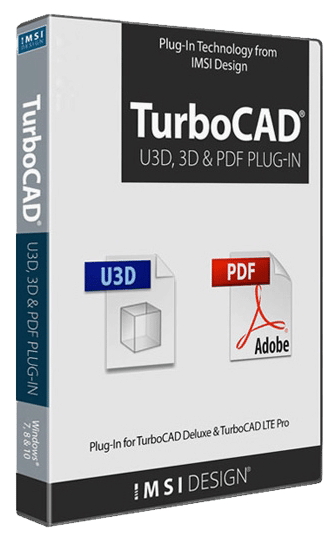MATERIALS

Materials
The RedSDK Plug-in for TurboCAD integrates directly with TurboCAD’s material editor. It also provides numerous shaders to create materials and their finishes with a real-time preview. This is available even on a selection from the model instead of just a simple cube or sphere (also available). When creating or altering materials, there are extensive descriptions of each shader in the dialog window to simplify each step.
There are over 500 materials included, with the ability to create hundreds custom Colors, Materials, and Effects to extend your rendering capabilities.
The RedSDK material library is a complete library of pre-defined materials for use with RedSDK. All materials are defined using high resolution textures and are ready to use for photo-realistic needs. In addition, many materials also exist in ‘real-time’ configuration for advanced interactive renderings.
The most advanced realistic material is intended for good quality/speed ratio visualization. It features what most people would expect from a all-purpose material.
NEW FEATURES
Overview of changes
This new version of RedSDK is focused on both extending the RedSDK feature set and also keeping RedSDK efficient and better perfprming. Among all changes, we can note:
- Improvements in rendering quality & performance for Multiple-Importance Sampling, Probabilistic Light Sampling and Adaptive Ray-Tracing
- Extensions of the post-processing capabilities of RedSDK: New post processing features.
- Real-time rendering enhancements: Real-time improvements.
- Engine enhancements: Debug output for better error tracking.
- New features such as Clouds.
- Improved interfacing with hardware
|
 |
|
Enhanced multiple importance sampling:
New methods used for Multiple-importance sampling calculations in RedSDK 4.3. This results in much better results. The image above compares results got from RedSDK 4.2 with new results got from RedSDK 4.3. All rendering options are identical and rendering times are identical too. |
Enhanced probabilistic light sampling:
IReduces the burden of rendering scenes with many lights by improving the probabilistic distribution of lighting samples. On average, scenes render faster AND get a better quality result with less noise. Please see the improvement in RedSDK 4.3 with identical rendering parameters on an average scene (6 million triangles, 25 lights, 200 materials): AA = Anti Aliasing level, L = Lights sampling rate, G = glossiness sampling rate. |
|
 |
 |
|
Adaptive ray-tracing:
RedSDK features a new rendering mode based on Adaptive Sampling for ray-tracing. With Adaptive Sampling, the user can reduce the amount of calculation to perform for a pixel based on a quality threshold. Performance savings can reach up to 75% of the rendering time, at the expense of a little loss in quality.
This means that, for a given pixel to compute in an image, the computational effort is constant. The amount of the computational effort is determined by the rendering options that are selected for image processing:
- Reflect & Refract Depths
- Shadowing Depth
- Ray Cutoff
- Light Cutoff
- anti-aliasing etc…
As a result, we get an image with a variable noise level per pixel, that depends on the frequency of the phenomenon we have to sample (reflections, shadows of tiny objects, etc…). |
New post processing features:
The set of post-processing effects available in RedSDK has been increased to include a new set of post-effects:
- Sharpen,
- Glow,
- Blur,
- Depth Of Field.
Then, new color manipulation tools have been added too:
- Brightness / contrast controls,
- Hue Saturation Lightness controls,
- Input / output levels controls.
All these effects are available in all RedSDK modes: hardware, hybrid or software. |
|
 |
 |
|
Real-time improvements:
A few enhancements were made in RedSDK 4.3 to enhance the lighting capabilities of the GPU:
- Portals are now visible and rendered by the GPU. Portals are considered as physical lights and are converted to the GPU as any other physical light.
- IES profiles are now visible and rendered, with no associated performance cost.
|
Hardware issues:
Several changes have been made to the RedSDK configuration to bypass hardware issues:
- The NVIDIA threaded optimization has been disabled for all NVIDIA drivers on starting a RedSDK application. This threaded optimization could cause application crashes. The occurence was low but significative enough to let us disable this option. As soon as this issue gets fixed we’ll enable the threaded optimization again.
- On recent INTEL HD graphics, we had several customer application issues reporting a loss in rendered frames (the application window is not refreshed sometimes, even if rendered properly). This has been countered by setting the value of the RED::OPTIONS_DATA_RELEASE_TIMER to INT_MAX as the new default in RedSDK 4.3. Practically, this means that RedSDK does not release intermediate rendering buffers it uses and keeps a pool of buffers ready to be reused in case of need. As nowadays GPUs have a large amount of video memory available, we don’t think this’ll cause any problem.
- We have modified the primary GPU detection method, as a result of incorrect values that could be returned by Windows EnumDisplayDevice call (mainly dual GPU Optimus systems with NVIDIA / INTEL GPUs). The new method is OpenGL based, so its result should always match the real GPU used by RedSDK.
|
RedSDK Interactive Color adjustments, Filters and Sketch rendering:
|
 |
|
Color Adjustment:
|
Filters:
|
|
 |
 |
|
Sketch rendering:
|
– Color Adjustment
– Filters
– Sketch RenderingThe ‘Colors’ section was added to the palette ‘Advanced Render Styles’. This section allows to edit the set of ‘Color adjustment’ parameters of the selected RedSDK render style.
These parameters comply with the same parameters in the Render Manager:The ‘Filters’ section was added to the palette ‘Advanced Render Styles’. This section allows to edit the ‘Filters’ parameters of the selected RedSDK render style.
These parameters comply with the same parameters in the Render Manager:The ‘Colors’ section was added to the ‘Advanced Render Styles’ palette. This section allows editing the set of ‘Color Adjustment’ parameters of the selected RedSDK render style.














